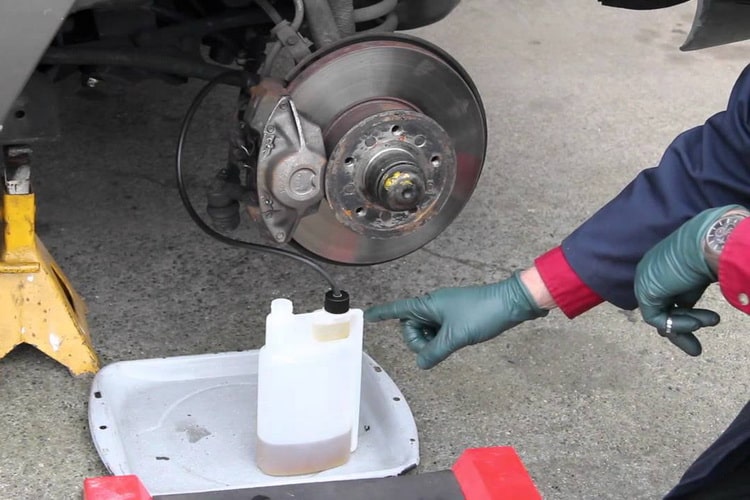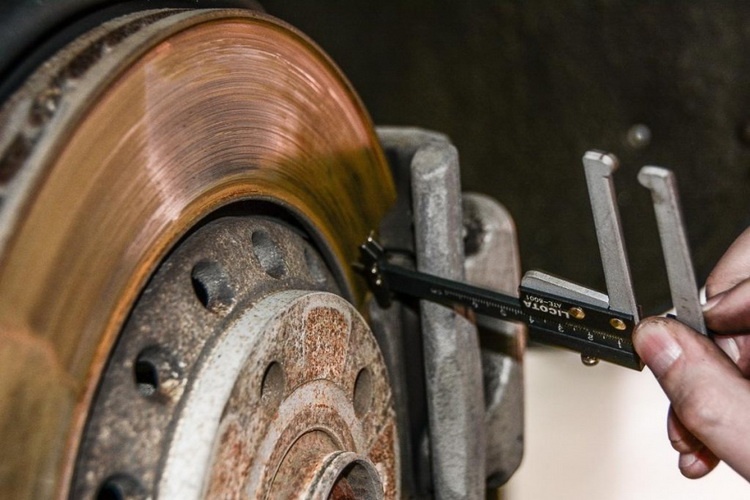
How to check the ABS sensor yourself
Content
The efficiency of the braking system of a car largely depends on the skills of the driver, on his professional skills. But, in this case, various auxiliary systems and components that allow you to create all the necessary conditions for safe driving also serve as a significant help.
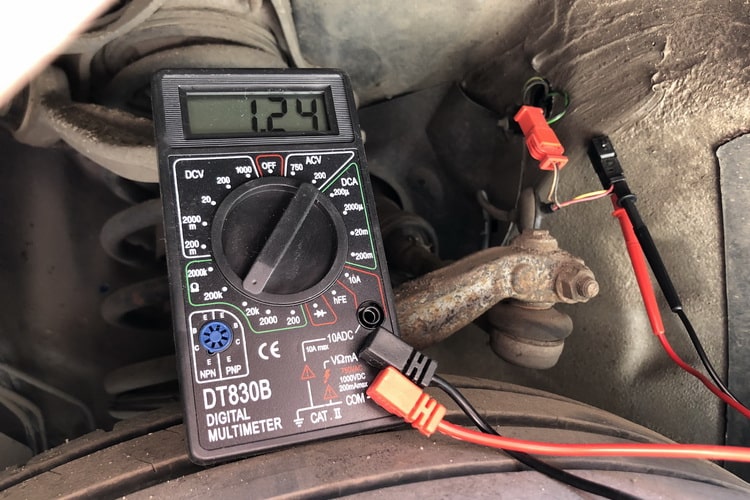
A special role in this case is played by an electronic mechanism that prevents the wheels from locking - an anti-lock braking system. In fact, the range of action of the presented system goes far beyond its intended purpose, which is best reflected in the controllability of the vehicle in various operating modes.
One of the most important components of this system is the ABS sensor. The effectiveness of the entire braking process depends on its proper operation. Let's get to know him better.
The principle of operation of the ABS sensor
Any diagnostic measure will not be effective if the driver has no idea about the principles of operation of the unit or element of the system under study. Therefore, before the stage involving surgical intervention in the operation of this device, first of all, it is necessary to study the principle of its operation.

What is an ABS sensor?
Let's start with the fact that this simple device can be found on each of the 4 hubs of the car. A solenoid is located in its sealed plastic case.
Another important element of the sensor is the so-called impulse ring. The inner side of the ring is made in the form of a toothed thread. It is mounted on the back side of the brake disc and rotates with the car wheel. At the end of the solenoid core is a sensor.

The principal features of the operation of this system are based on reading the electrical signal coming from the throttle directly to the reader of the control unit. So, as soon as a certain torque is transmitted to the wheel, a magnetic field begins to appear inside the electromagnet, the value of which increases in proportion to the increase in the speed of rotation of the impulse ring.
As soon as the rotation of the wheel reaches the minimum number of revolutions, the pulse signal from the presented sensor begins to flow into the processor device. The impulse nature of the signal is due to the ring gear of the impulse ring.
The subsequent operation of the ABS hydraulic unit depends on the frequency of the signal recorded in the receiving device. The actuating elements of the hydraulic brake force distributor are solenoids, a hydraulic pump and valve mechanisms.
Depending on the intensity of the signal entering the valve body, valve mechanisms controlled by solenoids come into operation. In the event that a wheel lock occurs, the hydraulic unit, taking into account the corresponding signal, reduces the pressure in this brake circuit.
At the moment, the hydraulic pump comes into operation, which pumps the brake fluid back into the GTZ reservoir through the open bypass valve. As soon as the driver reduces the effort on the pedal, the bypass valve closes, and the pump, in turn, stops working.
At this moment, the main valve opens and the pressure in this brake circuit returns to normal.
The presented modification of the ABS peripheral element is the most common and is used on most domestic and foreign cars.
Due to the relative simplicity of this design, the elements of the system are highly resistant to mechanical wear and have good performance.
If the part fails, then it costs not so much to carry out the manipulations described below. It is easier to buy and replace the sensor with a new one.
Signs of device malfunction
Despite the fact that the presented device, as a rule, is designed for uninterrupted operation during long-term operation, various failures and malfunctions may occur during their operation.
To visually monitor the operation of the system, an emergency lamp on the instrument panel of the car is used. It is he who first of all points to various kinds of violations of the system caused by a number of factors.
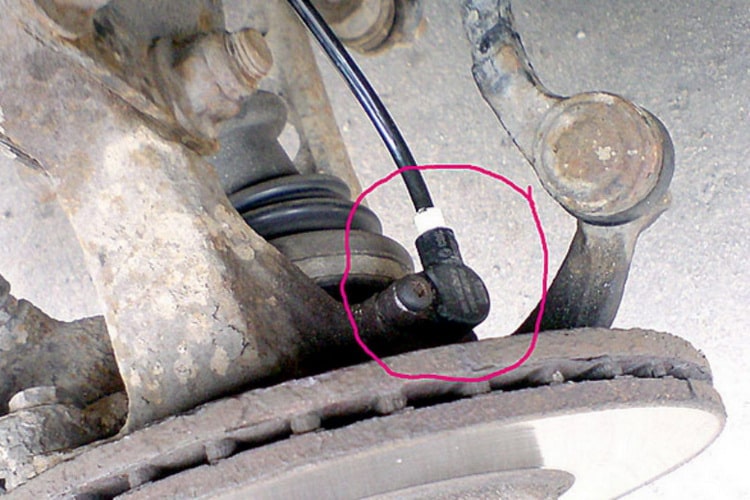

The reason for concern in this case may be that the control lamp does not go out for a long time after the key is turned to the short-circuit position, or there is no notification while driving.
The problems that caused this behavior of the sensor can be very diverse.
Consider a number of signs that will later help to identify the cause of the failure of a particular node of the system:
- the ABS light on the instrument panel is on for a long time or does not go out at all;
- excessive force when pressing the brake pedal;
- the brake pedal stops responding to its pressing;
- wheel locking when the brake pedal is pressed hard.
ABS systems of earlier versions, as a rule, were not equipped with a specialized indication of the operation of the system. In this case, its role was performed by the check engine check lamp.
How to diagnose the ABS system
Diagnostic measures that involve checking the ABS system are usually carried out using special equipment. One of them is the so-called diagnostic adapter. To connect it, the manufacturer provides a special diagnostic connector.
The system test starts when the ignition is switched on. The essence of such a check is that with the help of an adapter it is possible to detect the presence of a particular system error. Each error is assigned a specific code that allows you to judge the malfunction of a particular node or element of the system.
However, it is worth noting that in most cases, diagnostic adapters of the budget segment do not scan the entire system, but only the engine. Therefore, we recommend using a scanner with comprehensive diagnostics.
For example, we can include a Korean-made model Scan Tool Pro Black Edition. With a 32-bit chip on board, this scanner is able to diagnose not only the engine, but also other vehicle components (gearbox, transmission, ABS auxiliary systems, etc.) and at the same time has a fairly affordable price.


This multi-brand scanner is compatible with most vehicles since 1993, shows the operation of all available sensors in real time, VIN code of the vehicle, its mileage, ECU version, etc.
The device is able to measure the operation of various systems for stability over certain periods of time and save the obtained data in any device based on iOS, Android or Windows.
Diagnostics and preventive measures that make it possible to judge the performance of the system elements are carried out in specialized service centers. However, this task can be handled in a garage environment.
So, all that is needed to diagnose the ABS sensor is the minimum set of equipment, which includes: a soldering iron, multimeter, heat shrink and repair connectors.


Watch this video on YouTube
The verification algorithm consists of the following steps:
- wheel jacking;
- dismantling the control unit and controller outputs;
- connection of repair connectors to sensors;
- measuring resistance with a multimeter
If the sensor has not failed, the ohmmeter will show a resistance of about 1 kOhm. This value corresponds to the performance of the sensor at rest. As the wheel rotates, the readings should change. This will indicate its correctness. If there is no change in the readings, the sensor is out of order.
It should be noted that due to various modifications of sensors, their operating parameters may vary. Therefore, before condemning the sensor, you must first of all familiarize yourself with its operating range and only then draw conclusions about its serviceability.
In addition, in the event of malfunctions of the ABS, it is necessary to make sure that there are no damages to the underwater wires. If a break is detected, the wires should be "soldered".
Do not forget also that the repair pins must be connected in accordance with the polarity. Despite the fact that in most cases protection is triggered if the connection is incorrect, you should not do this. To facilitate the task, it is best to pre-mark the corresponding wires with a marker or electrical tape.
Checking with a tester (multimeter)
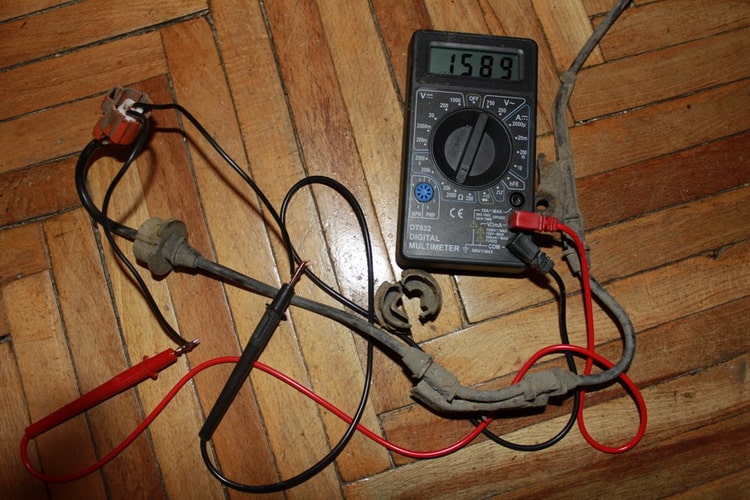

The performance of the sensor can also be diagnosed using a voltmeter. The entire sequence of operations completely copies the above algorithm, with one single difference. To obtain the desired result, it is necessary to create conditions under which the wheel will make revolutions with a frequency equal to 1 rpm.
At the outputs of a working sensor, the potential difference will be about 0,3 - 1,2 V. As the wheel speed increases, the voltage should increase. It is this fact that will indicate the working condition of the ABS sensor.
Checking the functioning of the ABS sensor is not limited to this. There are a couple more effective tricks that will help eliminate various malfunctions of the ABS system.
Oscilloscope


Among other things, you can use an oscilloscope to diagnose interruptions in the operation of the ABS sensor. It should be noted that the use of the presented device requires certain skills. If you are an avid radio amateur, it will not be difficult for you to resort to such diagnostics. But for a simple layman, this can cause a number of difficulties. Let's start with the fact that this device will cost you not cheap.
Among other things, its use is mostly justified in the conditions of a specialized service. Nevertheless, if by some miracle this outlandish device was lying around in your garage, it will be a good help for various diagnostic measures.
An oscilloscope creates a visualization of an electrical signal. The amplitude and frequency of the signal is displayed on a special screen, which gives a clear picture of the operation of a particular element of the system.
In this case, the principle of checking the health of the ABS sensor will be based on a comparative analysis of the results obtained. So, the whole procedure at the initial stage is similar to that carried out earlier with a multimeter, only instead of a tester, an oscilloscope should be connected to the sensor outputs.
The diagnostic procedure is as follows:
- rotate the suspended wheel with a constant frequency of about 2-3 rpm;
- fix the value of the oscillation amplitude on the oscilloscope display.
As soon as the readings from one sensor are taken, it is necessary to carry out all the same actions with the sensor installed on the opposite side of the same axle.
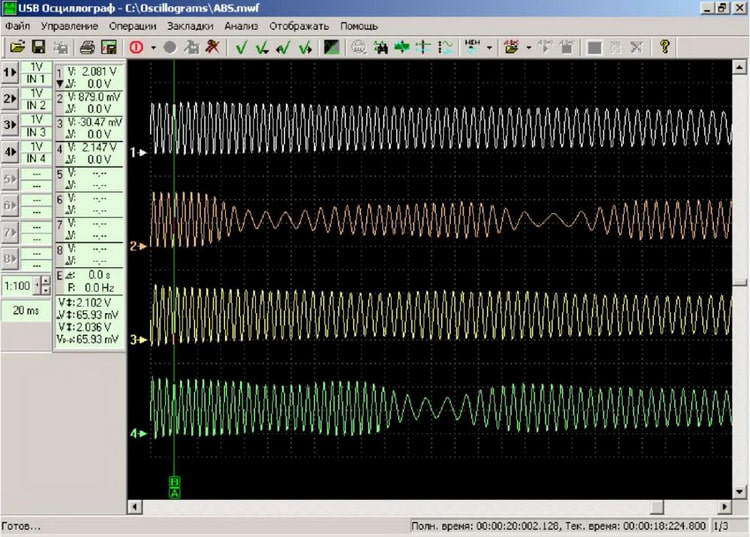

The results obtained should be compared and appropriate conclusions drawn:
- with relatively equal readings, the sensors can be considered serviceable;
- the absence of an abrupt phenomenon when a smaller sinusoid signal is set indicates the sensor's operability;
- maintaining a stable amplitude with a peak value not exceeding 0,5 V at the specified speed - the sensor serves faithfully.
A good alternative to an expensive device can be a special application with which you can carry out all diagnostic activities using an ordinary laptop.
Checking the sensor without instruments
ABS sensor diagnostics can be performed without the help of various recording devices. To do this, you just need a wrench or a flat screwdriver.
The essence of the test is that, when a metal object touches the core of an electromagnet, it must be attracted to it. In this case, you can judge the health of the sensor. Otherwise, there is every reason to believe that the sensor is dead.
How to fix the found faults
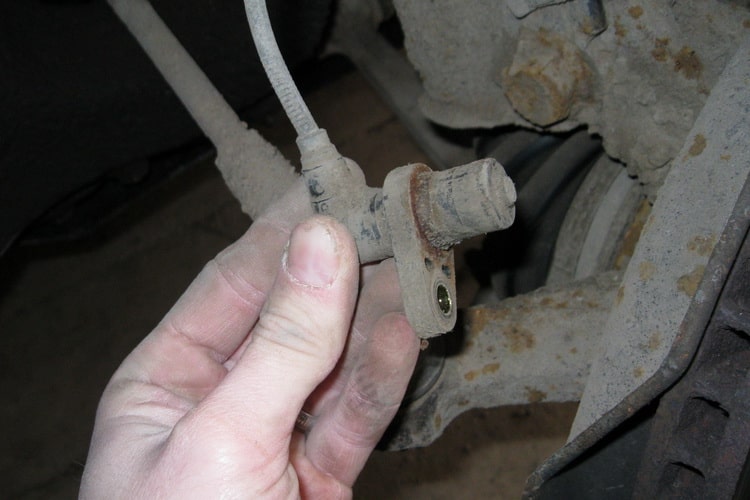

Once the diagnostic measures have been successful and the problem is found, it becomes necessary to eliminate the faulty element of the system. If it concerns the ABS sensor or the impulse ring, there is no need to talk about restoring their performance.
In this case, they usually need to be replaced. An exception may be the case when the working surface of the sensor is simply dirty during long-term operation. To do this, it will be enough to clean it of oxides and dirt particles. As cleaning agents, it is advisable to use ordinary soapy water. The use of chemicals is highly discouraged.
If the control unit was the cause of the failure, its resuscitation in some cases can cause serious difficulties. However, it can always be opened and visually assess the extent of the disaster. The dismantling of the cover must be done carefully, in order to avoid damage to the working elements.
It often happens that, as a result of vibration, the contacts of one of the terminals simply lost their rigidity. To re-solder them to the board, you do not need to have seven spans in your forehead. To do this, it is enough to get a good pulse soldering iron or a soldering station.


Watch this video on YouTube
When soldering, it is important to remember that the block's ceramic insulator is very sensitive to overheating. Therefore, in this case, care must be taken to ensure that it does not have an increased thermal effect.
